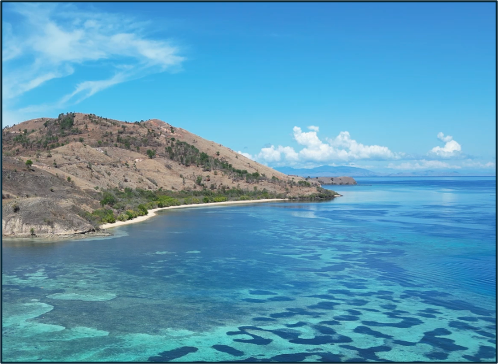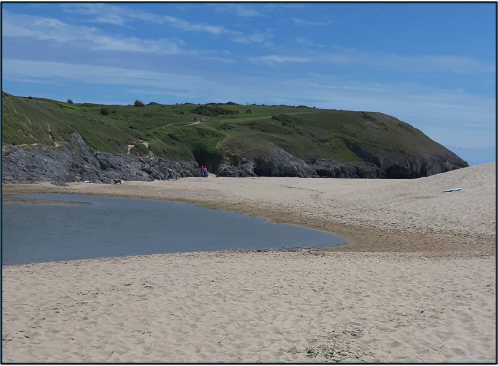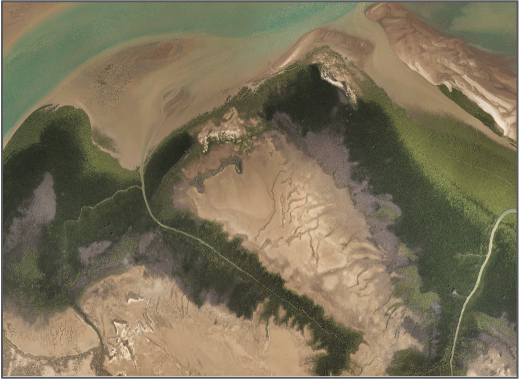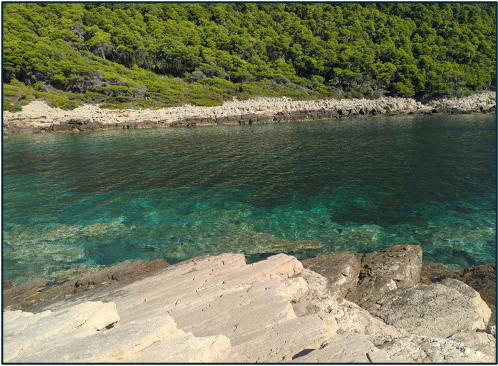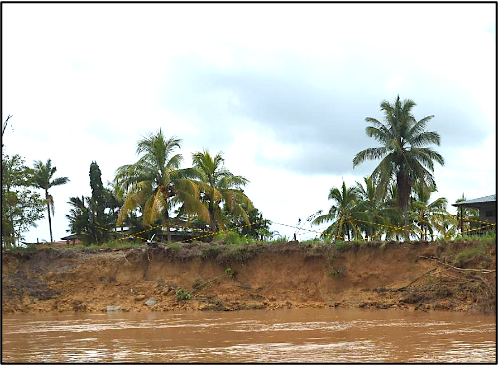
Living Coasts
Living Coasts is adapting existing capacity (developed jointly by Australia and the United Kingdom) to allow coastal and influencing inland landscapes to be consistently characterised, mapped and monitored from dense time-series of Earth observations and modelled descriptors of the environment.
Aims
Objectives
Strategic Plan
Working within the framework of the Open Data Cube, Living Coasts is using environmental descriptors retrieved or classified primarily from satellite sensor data to construct historical and current land cover maps and associated descriptions, with particular focus on Blue Carbon (Coastal) Ecosystems, including mangroves, saltmarshes and seagrasses. Comparisons over varying timeframes are then being used to document past changes by extracting evidence for impacts and driving pressures obtained from Earth observations and other sources. The information gathered will be used in conjunction with existing knowledge to inform decisions relating to planning of future landscapes under a range of economic and/or climate scenarios, quantifying associated benefits and risks, and monitoring progress towards co-designed plans including through Earth observations. Major emphasis is placed on maintaining, recovering and/or enhancing major components of the coastal zone (natural resources, biodiversity). Therefore, responses that promote positive pressures, avoid negative pressures or allow mitigation or adaptation of those that cannot be avoided will be promoted, with optimal pathways to achievement based on robust evidence.
See below for more information
Our aims are:
To understand how past and current landscapes and their dynamics, as quantified from Earth observation data, can be used to support co-designed future planning for people and nature.
Tagline 1
Our objectives are:
Demonstrate the application and transferability of Living Earth for generating scalable and consistent thematic classifications and descriptions of coastal zones from a diverse range of environmental descriptors. These will be retrieved or classified from Earth observation data within cloud-computing platforms with initial focus on the [Open Data Cube](https://www.opendatacube.org/).
Tagline 2
Planning for the future of coasts
The Strategic Plan for Living Coasts (coming soon) outlines how Earth observation data can be used within the framework of Living Earth to enhance use of Earth observation data for planning coastal futures to support well-being of nature and people. Key elements are the development of Living Earth to consider both land and water (including intertidal and subtidal) environments, gathering evidence for change impacts and driving pressures and planning future landscapes through co-design. The plan aligns with that of the Science and Technology Facilities Council (STFC) UK/Australia Earth Observation AgroClimate Programme.
Tagline 3
Planning for the future of coasts
For coastal and influencing inland environments, there is a need to increase the diversity of environmental descriptors that can be retrieved or classified from Earth observations and/or other sources. This is particularly the case for blue carbon ecosystems. Living Coasts utilises the Food and Agriculture Organisation (FAO) Land Cover Classification System (LCCS) to identify environmental descriptors that can be retrieved or classified from Earth observation data, which can then be used to construct the land cover maps according to this taxonomy. However, the project has identified several EDs in the intertidal and subtidal zone that are not well captured, if at all, including those relating to the extent and characteristics of macroalgae, floating algae, shellfish beds and corals and associated substrates. The FAO LCCS is therefore being adapted to allow relevant descriptors to be targeted and used to generate maps of terrestrial and aquatic areas of coastal landscapes. As with land cover, uncertainties associated with each of the aquatic environmental descriptors are being quantified.
Tagline 3
Planning for the future of coasts
Time-series classifications and associated descriptions of coastal landscapes (both terrestrial and aquatic) are being used in Living Coasts to obtain knowledge of how these have been shaped by past natural events and processes and/or human activities. This information is allowing driving climate and economic pressures that lead to change impacts to be identified and, in many cases, quantified. These might include, for example, impacts of vegetation loss, dieback, damage or species changeover as a result of the pressure of sea level rise, or increases in water sediment load and pollution following fires or erosion of agricultural fields. Consideration is given to the period over which change takes place and is observable on the ground but also from Earth observing sensors operating in different modes (e.g., optical, radar or lidar). In some cases, pressure information can be obtained from the time-series of Earth observations themselves, including frequency of inundation or burning, but often external data sources needed to be accessed.
Tagline 3
Planning for the future of coasts
Knowledge of the past can, in many cases, suggest what the future might hold but can also assist proactive co-designed planning of future landscapes, including through assessment of values and risks to anticipated assets. Once plans are established,progress towards ambitions can be monitored with adjustments to, for example, land management practices implemented as and when needed. Living Coasts is testing this approach on coastal landscapes in Australia and Wales with a view to further testing in countries in Southeast Asia and the South Pacific. Through engagement with a wide range of individuals, groups and organisations with interests or plans for futures, viewpoints and datasets are being gathered and used to generate, under different scenarios and viewpoints, future maps according to the FAO LCCS taxonomy and from desired or predicted environmental descriptors. These provide a basis for co-design of landscapes and the establishment of strategies to achieving success. Progress towards implementation can then be monitored through the Living Earth system.
Tagline 3
